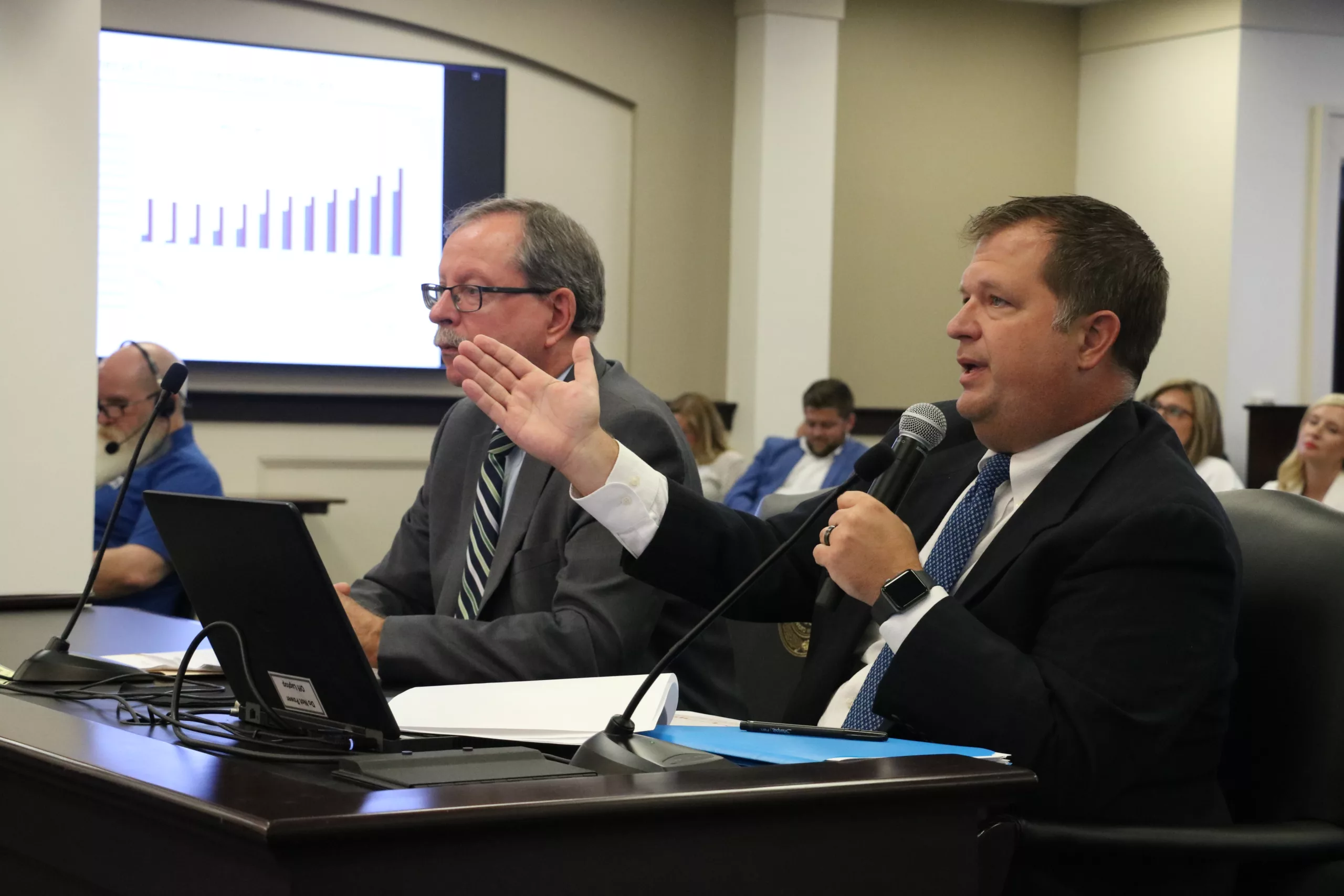Kentucky’s ‘rainy day’ fund reaches new heights due to tax revenue surplus

by Liam Niemeyer, Kentucky Lantern
FRANKFORT — Kentucky’s budget reserve trust fund, commonly known as the “rainy day” fund, now sits at more than $3.7 billion in large part due to record tax revenues brought in by the state during the last fiscal year.
State Budget Director John Hicks told state lawmakers at an interim committee meeting Wednesday the budget reserve trust fund is at a level “unlike we’ve seen” since its inception in the 1990s.
He said Kentucky’s rainy day fund ranked as the sixth richest among all states as a percentage of general fund expenditures in the past fiscal year, according to a recent report from the National Association of State Budget Officers.
“Five of those six states are oil states, which typically have very high reserves because of the volatility of that revenue stream,” Hicks said. “So, you know, really a unique circumstance.”
The state had received $1.55 billion more in tax revenues than allocated into its General Fund in the past fiscal year, and deposited $1.45 billion of that excess into the state budget reserve trust fund, the fund’s largest deposit ever.

Senate Appropriations and Revenue Committee Chairman Chris McDaniel, R-Ryland Heights, said the rainy day fund balance is a “high watermark” compared to when he first arrived in the Kentucky General Assembly in 2013, when the balance was well under $500 million.
“There’s 138 (lawmakers), which means there’s 150 different ideas about how to use it,” McDaniel said. “I think that one of our top priorities needs to be how do we return that to Kentuckians while still responsibly running government.”
McDaniel said he’s still unsure whether fiscal prerequisites will be met to allow Kentucky lawmakers to cut the state’s income tax rate again under a landmark tax law enacted last year by the GOP-dominated legislature. Some Republicans and the Kentucky Chamber of Commerce hope to phase out Kentucky’s individual income tax altogether.
That law, House Bill 8, cut the state income tax rate from 5% to 4.5% — a 10% decrease — and also set up a complicated process by which the General Assembly could consider each year an additional cut of a half a percentage point.
Two conditions have to be met for such a cut: the state’s rainy day balance must be at least 10% of total general fund revenues for the prior fiscal year, and the most recent fiscal year revenues must have exceeded spending by at least the amount that it would cost to reduce the income tax rate by one full percentage point.
The state’s rainy day fund balance, with the additional boost from the General Fund surplus, now sits at 24.6% of revenues from the past fiscal year and easily passes one of the two prerequisites set under HB 8. It remains to be seen whether the other prerequisite will be met to allow for a further cut of the income tax.
Democratic lawmakers and some economic analysts have warned against continued cuts to the state’s income tax, stating the current rosy financial picture could sour in the future and leave state government with few options to fill potential budget holes without revenue from income taxes.
Kentucky Lantern is part of States Newsroom, a network of news bureaus supported by grants and a coalition of donors as a 501c(3) public charity. Kentucky Lantern maintains editorial independence. Contact Editor Jamie Lucke for questions: info@kentuckylantern.com. Follow Kentucky Lantern on Facebook and Twitter.
Top Photo: State Budget Office Director John Hicks (left) and Kentucky Office of Financial Management Director Ryan Barrow (right) speak before lawmakers. (Kentucky Lantern photo by Liam Niemeyer)
Recommended Posts

Kamala Harris needs a VP candidate. Could a governor fit the bill?
Fri, July 26, 2024
After cyber-attack on Jefferson County Clerk, Fayette counterpart discusses precautions
Fri, July 26, 2024
An eastern Kentucky animal shelter is swelling this summer
Fri, July 26, 2024